
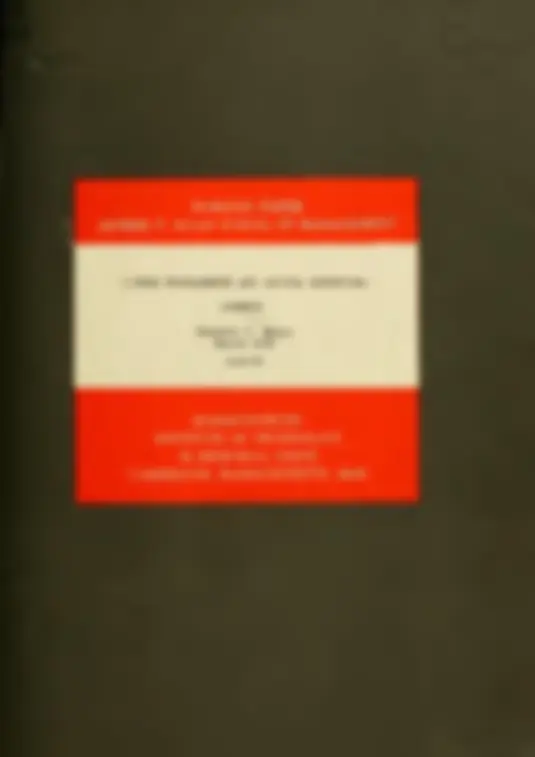



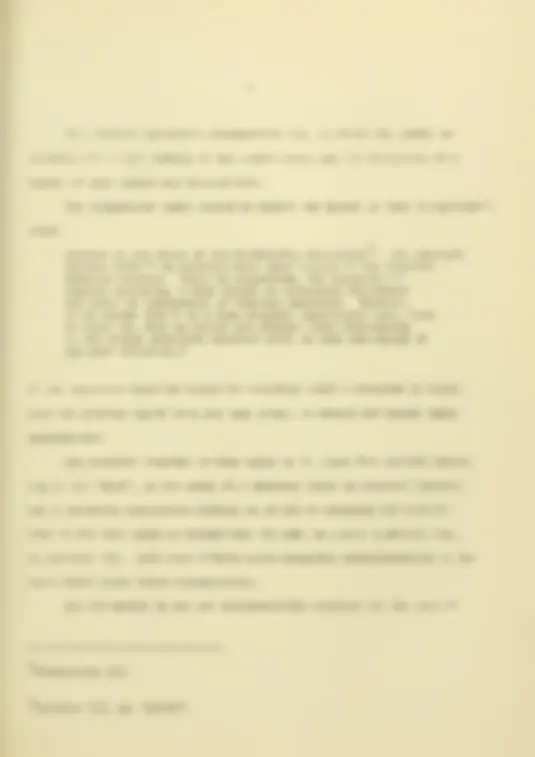

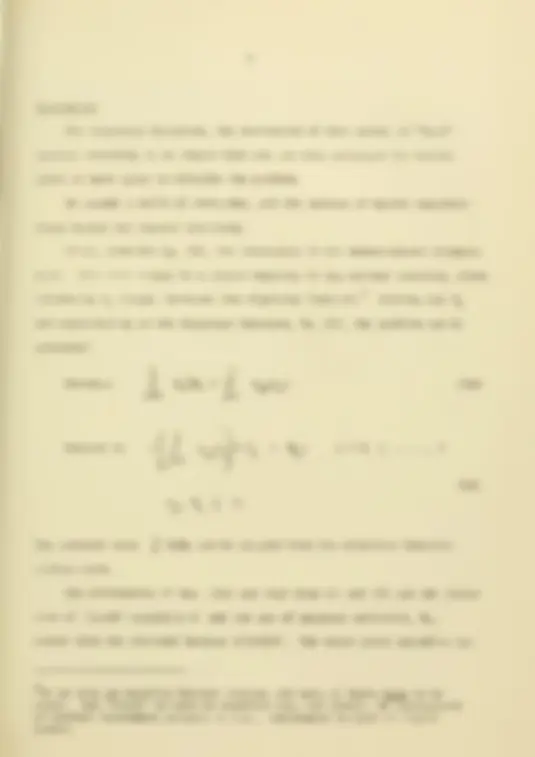

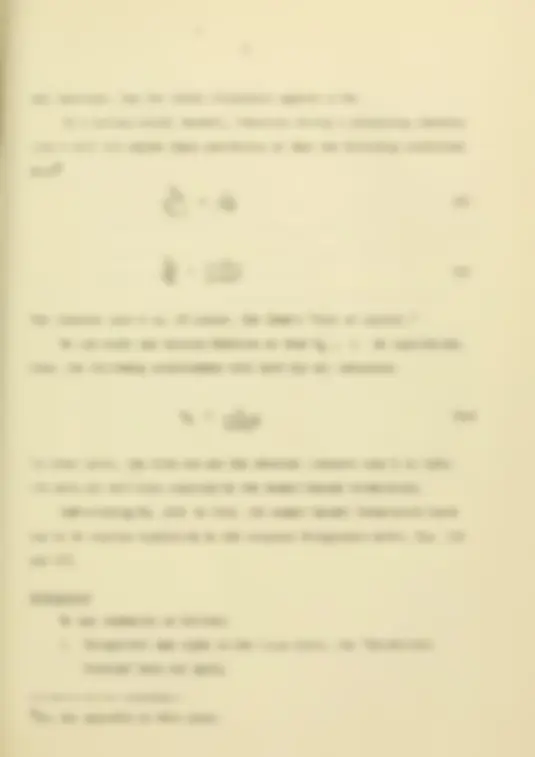

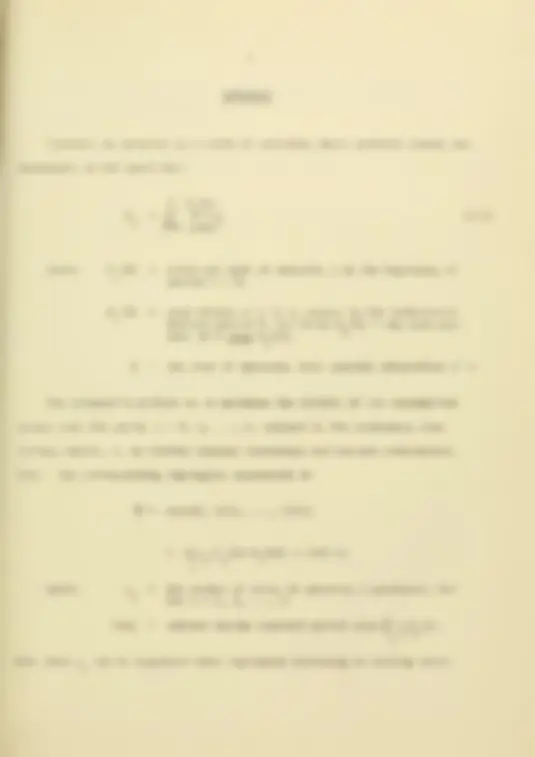

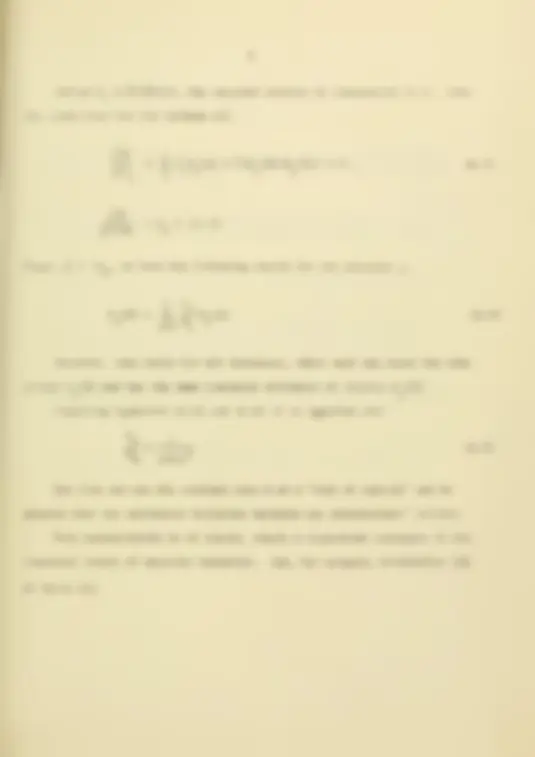









Study with the several resources on Docsity

Earn points by helping other students or get them with a premium plan


Prepare for your exams
Study with the several resources on Docsity

Earn points to download
Earn points by helping other students or get them with a premium plan
Community
Ask the community for help and clear up your study doubts
Discover the best universities in your country according to Docsity users
Free resources
Download our free guides on studying techniques, anxiety management strategies, and thesis advice from Docsity tutors
Resolution. For corporate decisions, the resolution of this matter of "hard" capital rationing is so simple that one can only apologize for having.
Typology: Summaries
1 / 28

This page cannot be seen from the preview
Don't miss anything!





















DcWlY library
Stewart C. (^) Myers March 1970 445-
Stewart C. Myers
This paper is the latest, and I hope the last chapter, in the contro- versy begun by William H. Baumol and Richard E. Quandt in their criticism (^) [1]
thorough review^ and^ partial^ resolution^ of^ the^ matter^ has^ been offered by Willard T. Carleton in a recent article [2]. My^ purpose here is to try to complete the job.
Background The Weingartner model, reduced to essentials, is as follows; J T Maximize c^ (^) ^ [a.j./(l+k) ]xi j=l t=0 -"^ (1)
Subject to (^) [i a,.xj. M,; (^) t =^ 0, (^) 1, (2) x^ (^) J = (^) 1.
where: k =^ a fixed discount rate, the "cost of capital"; a4(. =^ the from^ net project^ cash flow, possibly negative, obtained j in^ period^ t; x^ =^ the number of units of (^) j constructed; Mj. = the fixed (^) amount of cash available at t.
Weingartner (^) actually makes a distinction between cash outlays and cash returns. scope of (^) thisHowever, paper. the distinction (^) is not necessary within the restricted
"hard" rationing --^ the case Baumol and Quandt were concerned with. The Baumol-Quandt Solution Baxunol and Quandt recast the basic model as follows:^4 T Maximize (^) *£^ (^) ^t^t ^^^ t=
Subject to ~ (^) [^ (^) ^it^j •^ ^t - '> t =^1 2 T (4) W^, (^) Xj > (^) 0.
where; W^. =^ cash withdrawn for owners' consvm^Jtion in period t; U^ =^ marginal utility of consun?)tion in t^ assumed constant.
This solves the problem^ but not in a wholly useful way. First, the objective is a corporate one, and it is not clear that the usual idea of a project's present value retains meaning. Second, and more in^jortant, the idea of maximizing "utility," while perhaps useful to the individual investor, seems both vague and arbitrary for corporate capital budgeting decisions. As Carleton notes, "Precluded from using the company's cost of capital, [Baumol and Quandt] invoke a subjective discounting procedure whose welfare implications for resource allocation are quite suspect."
[ iJ. p. (^) 326, See Carleton's (^) discussion of this point. (^) [2], p. 829. ^Ibid.
Resolution For corporate decisions, the resolution of this matter of "hard" capital rationing is so simple that one can only apologize (^) for having taken so much space to describe the problem. We assume^ a world^ of certainty,^ and^ the absence of market imperfec- tions except for capital rationing. First, consider^ Eq.^ (4), the constraint in the Baumol-Quandt formula- tion. This will always be a strict equality in (^) the optimal solution, since increasing W^ (^) always increases (^) the objective function. Solving for W^^ and substituting in the objective function, Eq, (^) (3), the problem can be rewritten T J Maximize (^) ^ U(-[M^ + (^) ^ (^) ^it^i^ (3a) t=0 (^) J = '
Subject to
Jt (^) J t
-j' (^) \ ^ 0.
(4a)
The constant term (^) 2. ^tMt can be dropped from the objective function without harm. The differences of Eqs. (^) (3a) and (4a) from (^) (1) and (2) are the inclu- sion of (^) "slack" variables W and the use of marginal utilities, (^) Ut, rather than the discount (^) factors l/(l+k)t. (^) The extra slack variables are
It is also an equality because sources and (^) uses of funds have to be equal. Any "slack" in such an equation can, and should, (^) be interpreted as another investment project — (^) i.e., investment in cash (^) or liquid assets.
the firm is thereby necessarily cut off from the capital market and, as a consequence, from any external discounting criteria."^9 The firm always has the option of paying dividends, and the rela- tive values of dividend payments at different points in time is determined by the interest rate k regardless of whether capital is rationed. The "cost of capital" k thus serves perfectly well as an external discounting criterion in the case of "hard" capital rationing.
^Baumol and Quandt (^) [l], (^) p. 322.
Consider an investor^ in a world of certainty where security prices are determined in the usual way: T R.(t)
t=0 (l+k)*^
where: P (^). (0) =^ price per unit of security (^) j at the beginning of period (^) t =^ 0; R.(0) -" =^ cashhorizon return of j in t, except in the (arbitrary) period T, for which R (^) , (T) =^ any cash pay- ment at T plus P.(T); ^ k =^ the rate of interest, here assumed independent of^ t. The investor's problem is to maximize the utility of his consumption stream over the period t =^ 0, 1, ..., T, subject to the constraint that current wealth, E, be divided between investment and current consumption, C(0). The^ corresponding^ Lagrangian^ expression^ is
j J^ J where: x. -" = the number of units of security (^) j purchased; for for t = (^) 1, 2,... (^) , T
.
j "^ -^